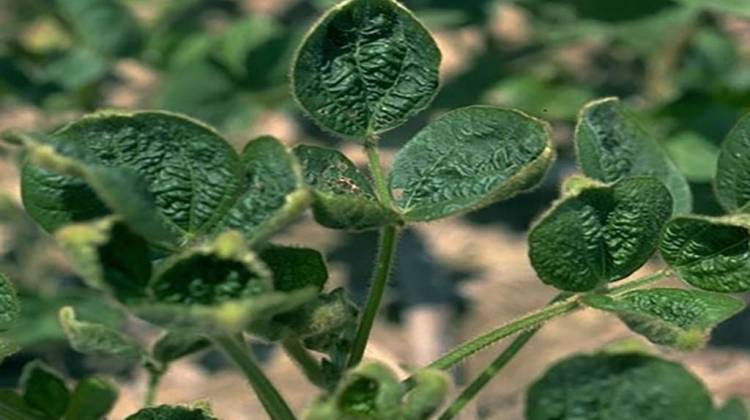
Dicamba can cause "cupping" in non-tolerant soybeans, which are especially susceptible to the herbicide.
Photo courtesy Purdue UniversityThe weedkiller dicamba — which has a habit of drifting off one farmer’s field and killing crops in another — will stay on the market for two more years. The Environmental Protection Agency recently re-approved its use for dicamba resistant soybean and cotton crops.
Some environmental groups argue these products shouldn’t be on the market. Last year, a coalition of farmers and environmentalists filed a lawsuit against the EPA for approving the weedkiller.
But Scott says the EPA needs to do more research to find what’s to blame for these drift issues.
“Did the applicator follow everything he was supposed to follow? And if the answer’s no, then you sort of put that on the back of the applicator," he says. "If the answer’s yes, they did everything they were supposed to, then it seems like its a problem with the product.”
Scott says, for multiple reasons, it can be difficult for the OISC to find the cause of the drift in its investigations.
With this recent approval comes even more rules on how to use dicamba herbicides. Just last year the EPA put additional restrictions on dicamba, but there's some evidence to suggest those didn’t work. The Office of the Indiana State Chemist received more dicamba drift complaints this year than in 2017. The weedkiller was also responsible for the majority of pesticide drift complaints overall.
Though it’s still reviewing the new dicamba product labels, Pesticide Administrator David Scott says these new restrictions don’t seem drastically different and many things were left unaddressed.
“Things like reference to no application when the wind is blowing to an adjacent or neighboring crop. We still don’t have a federal definition of what neighboring and adjacent is,” he says.
That leaves farmers wondering how far away they would have to be from a nearby field to spray dicamba. Scott says the OISC would like to see that distance be no closer than half a mile downwind.
Scott says a work group led by the Indiana Pesticide Review Board plans to look at the science behind one the effectiveness of one new restriction in particular, which prohibits spraying dicamba on soybeans until 45 days after planting.
Indiana Environmental reporting is supported by the Environmental Resilience Institute, an Indiana University Grand Challenge project developing Indiana-specific projections and informed responses to problems of environmental change.
 DONATE
DONATE








 View More Programs
View More Programs


 Support WFYI. We can't do it without you.
Support WFYI. We can't do it without you.